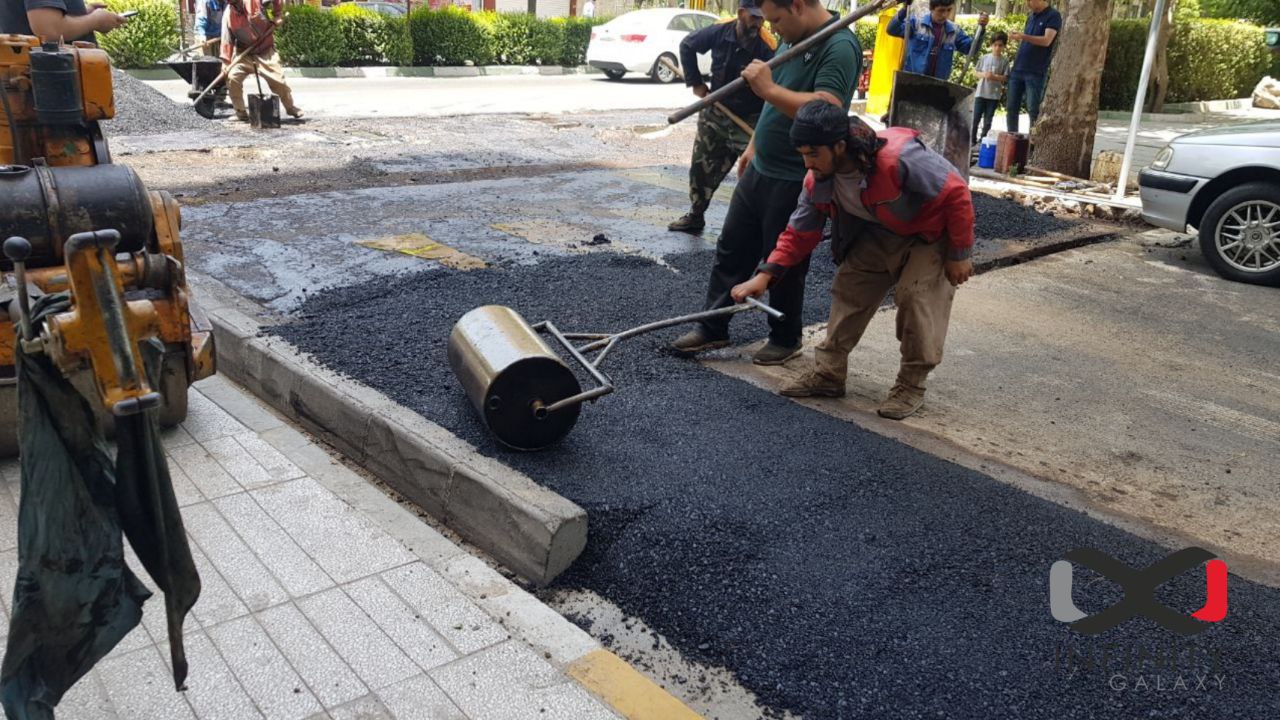Hot Mix Asphalt Paving: Redefining Commercial Residential Property Landscapes
Hot Mix Asphalt Paving: Redefining Commercial Residential Property Landscapes
Blog Article
Unlocking the Secrets of Hot Mix Asphalt Innovation
Exploring the depths of warm mix asphalt innovation uncovers a world where meticulous procedures and exact formulas merge to shape our roads and infrastructure. The fusion of binders, fillers, and accumulations isn't merely a building job but a calculated orchestration of sturdiness and effectiveness.
Significance of Warm Mix Asphalt
Warm Mix Asphalt plays a critical function in contemporary facilities development due to its longevity and cost-effectiveness. As the most commonly utilized paving material for roadways, freeways, and car parking great deals, Warm Mix Asphalt uses an array of advantages that contribute to its significance in construction projects.
The longevity of Warm Mix Asphalt originates from its structure, that includes aggregates, binder, and filler products that are meticulously chosen and mixed to satisfy particular performance demands. This accurate mix leads to a solid and versatile pavement that can sustain constant use without considerable damage. Hot Mix Asphalt is 100% recyclable, more improving its sustainability and ecological advantages. On the whole, the significance of Hot Mix Asphalt in framework development can not be downplayed, as it proceeds to be a cornerstone of contemporary building practices.
Components of Asphalt Mixes
The composition of asphalt blends consists of very carefully selected accumulations, binder, and filler products that are crucial for achieving particular performance needs. Aggregates are the key element of asphalt mixes, supplying toughness and stability. The binder, usually bitumen or asphalt cement, holds the accumulations together and supplies flexibility and sturdiness to the mix.
The mix and percentage of these elements play a considerable role in figuring out the quality and efficiency of the asphalt mix. Engineers thoroughly develop the mix to meet certain needs, thinking about aspects like website traffic quantity, environment problems, and sidewalk lifespan. Correct option and harmonizing of aggregates, binder, and fillers are crucial for producing durable, resilient asphalt sidewalks.
Mixing and Production Methods

Once the accumulations are chosen, the binder, frequently asphalt cement, is added to bind the products together. The binder's quality and amount dramatically influence the mix's resistance, flexibility, and toughness to environmental aspects. In addition, fillers like hydrated lime or Portland cement may be included to enhance certain attributes of the asphalt mix, such as its workability or wetness resistance.
Throughout production, the aggregates and binder are warmed, typically in between 250-325 ° F(121-163 ° C ), to promote mixing and ensure appropriate finishing of the aggregates. The blending procedure should be comprehensive to achieve a homogeneous combination that promotes the wanted efficiency features of the asphalt. Various techniques, such as batch blending or drum blending, are used to accomplish consistent and high-quality asphalt blends for building jobs.
Factors Affecting Asphalt Efficiency
Factors influencing asphalt efficiency encompass a variety of variables that affect the sturdiness, durability, and overall top quality of asphalt sidewalks. One vital factor is the top quality of materials utilized in the asphalt mix.

Ecological problems additionally affect asphalt performance. Temperature level variations, dampness infiltration, and website traffic tons can all impact the structural stability of the sidewalk. Style factors to consider, such as sidewalk thickness and water drainage, are vital in making certain the lasting efficiency of the asphalt sidewalk. By very carefully thinking about these factors, specialists and engineers can optimize asphalt performance and boost the home solution life of pavements.
Lasting Practices in Asphalt Modern Technology

Additionally, the advancement of warm-mix asphalt (WMA) innovations has gained grip recently. WMA permits for the production and placement of asphalt blends at reduced temperatures compared to typical hot-mix asphalt, causing reduced power intake and greenhouse gas exhausts. The usage of porous asphalt blends can assist mitigate stormwater drainage issues by permitting water to infiltrate through the sidewalk and right into the ground, promoting all-natural water filtration and reenergize processes. By implementing these sustainable practices, the asphalt market can add to constructing a more eco friendly and resilient infrastructure network.
Conclusion
To conclude, warm mix asphalt modern technology plays an important duty in modern-day infrastructure development because of its longevity and cost-effectiveness. By very carefully stabilizing parts, employing proper mixing techniques, and thinking about different elements, designers can produce top notch asphalt blends that stand up to hefty web traffic tons and extreme climate condition. Embracing lasting practices, such as using warm-mix modern technologies and recycled materials, better boosts the ecological kindness of asphalt innovation.
Blending and manufacturing techniques in warm mix asphalt modern technology include the precise combination and handling of aggregates, binder, and fillers to produce a high-performance and resilient asphalt mix.Aspects influencing asphalt performance include an array of variables that affect the toughness, long life, and general quality of asphalt sidewalks. Sustainable techniques in asphalt modern technology encompass different initiatives intended at minimizing the environmental influence of asphalt production and paving procedures. By integrating redeemed asphalt pavement (RAP) and recycled asphalt tiles (RAS) into brand-new asphalt mixes, the sector can substantially minimize the consumption of raw products and power, while likewise decreasing garbage dump waste.
WMA allows for the manufacturing and placement of asphalt mixes at lower temperatures contrasted to conventional hot-mix asphalt, resulting in lowered energy intake and greenhouse gas linked here emissions.
Report this page